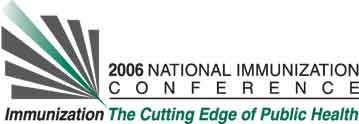Wendy Wang1, Robert Vryheid
1, Mark H. Sawyer
1, Kathleen W. Gustafson
2, Michelle Picardal
1, and Michelle De Guire
1. (1) San Diego Immunization Partnership, UC San Diego, County of San Diego HHSA Immunization Branch, PO Box 85222, Mail Stop P511B, 3851 Rosecrans Street, San Diego, CA, USA, (2) San Diego County Immunization Branch, County of San Diego Health and Human Services Agency, PO Box 85222, Mail Stop P511B, 3851 Rosecrans Street, San Diego, CA, USA
Learning Objectives for this Presentation:
By the end of the presentation participants will be able to describe the process for assessing coverage levels for influenza vaccination in San Diego County and identify which groups were more affected by the influenza vaccine shortage.
Background:
As the severity of the 2004-05 influenza vaccine shortage changed CDC expanded the recommended priority groups.
Objectives:
Assess influenza vaccine coverage for various groups. Estimate the impacts of the shortage and identify possible strategies for improving coverage.
Methods:
During March to mid-April of 2004 and 2005, 4049 respondents ages ≥18 years and 4138 parents of 6-23 month old infants were interviewed in a random digit dialing telephone survey.
Results:
In the high priority groups (age ≥65 years, 18-49 years with health problems, and health care workers age 18-49 years), coverage declined <5%. Among the lower priority groups (18-49 years without risk factors and 50-64 years), coverage declined by statistically significant differences of 54% and 33%, respectively. The only group increasing coverage was infants aged 6-23 months, from 21.5% to 40.1%. The most common reason for receiving influenza vaccination in all groups was a recommendation from a doctor or nurse. Reasons for not receiving influenza vaccine during the shortage varied. The answers, “saving the vaccine for others” or “provider didn't have the vaccine,” were the two most common for health care workers and household contacts. The top reason for adults 18-64 with underlying health conditions, and for adults ≥65 years, was “provider didn't have the vaccine.” “Never sick” was the most common for healthy adults 18-49 years.
Conclusions:
Results indicate that the national strategy of prioritizing the groups was successfully implemented in San Diego County. One potential strategy for increasing coverage across groups would be interventions targeted to health care providers.
See more of Posters
See more of The 40th National Immunization Conference (NIC)

